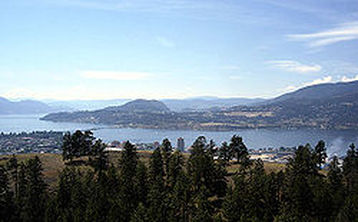Climate of a Freshwater Biome

The freshwater biome covers only 0.8% of the total water on this Earth, yet the water which makes up this biome are distributed unevenly throughout the globe (W2). As a result the climate of these Biomes is greatly diverse depending on the region (W2).
Figure #1: The Okanagan Lake, located in British Columbia, is one of the longest lakes in Canada.
(Image source: http://upload.wikimedia.org/wikipedia/commons/thumb/6/62/Okanagan.jpg/250px-Okanagan.jpg)
On average temperatures range from 65 °F to 75 °F in the summer and
35 °F to 45 °F in the winter (W2). Because of the diversity of the number of regions this biome is present in, such a vast range of temperatures can't be ruled out. The climate of freshwater biomes is determined by by a number of factors including location, season and depth of water as the most prominent ones (W2).
On average the temperatures will decline as the water gets deeper. This pattern is much more common in lakes where there is less water movement and more depth compared to a river or stream.
Precipitation and temperatures are also dependent on the region the biome is located in. Many of the worlds wetlands are located in temperate zones, so they will have warmer temperatures and greater precipitation. Lakes and rivers (refer to figure 1) located in mountains and valleys may have lower temperatures and less precipitation.
Figure #1: The Okanagan Lake, located in British Columbia, is one of the longest lakes in Canada.
(Image source: http://upload.wikimedia.org/wikipedia/commons/thumb/6/62/Okanagan.jpg/250px-Okanagan.jpg)
On average temperatures range from 65 °F to 75 °F in the summer and
35 °F to 45 °F in the winter (W2). Because of the diversity of the number of regions this biome is present in, such a vast range of temperatures can't be ruled out. The climate of freshwater biomes is determined by by a number of factors including location, season and depth of water as the most prominent ones (W2).
On average the temperatures will decline as the water gets deeper. This pattern is much more common in lakes where there is less water movement and more depth compared to a river or stream.
Precipitation and temperatures are also dependent on the region the biome is located in. Many of the worlds wetlands are located in temperate zones, so they will have warmer temperatures and greater precipitation. Lakes and rivers (refer to figure 1) located in mountains and valleys may have lower temperatures and less precipitation.
